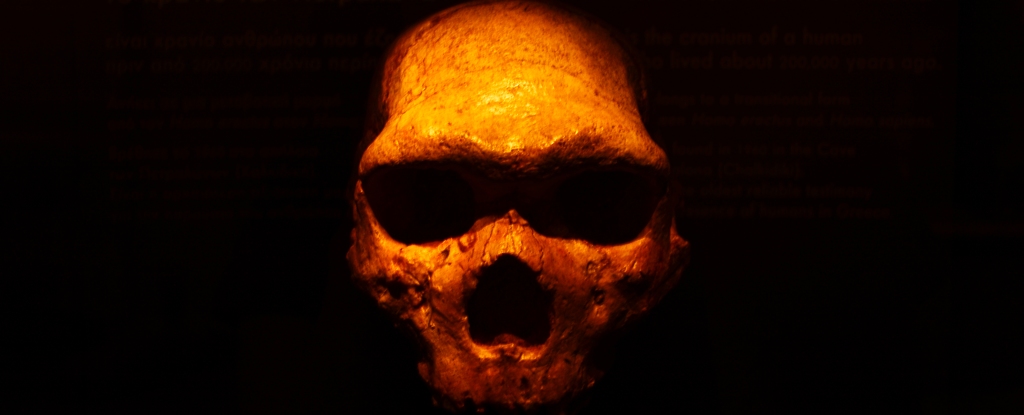Neanderthals, the closest cousins of modern humans, lived in parts of Europe and Asia until their extinction about 30,000 years ago.
Genetic research is revealing more and more about the connections between modern humans and these long-extinct relatives—most recently, that a flurry of interbreeding between our species occurred in a relatively short period of time, about 47,000 years ago. But one mystery still remains.
The Homo sapiens today’s genome contains little Neanderthal DNA. These genetic traces come from almost every part of the Neanderthal genome – except for the Y sex chromosome, which is responsible for creating males.
So what happened to the Neanderthal Y-chromosome? It may have been lost accidentally or due to mating patterns or a worse function. However, the answer may lie in a centuries-old theory about the health of interspecies hybrids.
Neanderthal sex, genes and chromosomes
Neanderthals and modern humans went their separate ways sometime between 550,000 and 765,000 years ago in Africa when Neanderthals wandered into Europe, but our ancestors stayed put.
They would not meet again until H. sapiens migrated to Europe and Asia between 40,000 and 50,000 years ago.
Scientists have discovered copies of the complete male and female Neanderthal genomes, thanks to DNA from well-preserved bones and teeth of Neanderthal individuals in Europe and Asia.
Not surprisingly, the Neanderthal genome is very similar to ours, containing about 20,000 genes grouped into 23 chromosomes.
Like us, they had two copies of 22 of these chromosomes (one from each parent) and also a pair of sex chromosomes. Females have two X chromosomes, while males have one X and one Y.
Y chromosomes are difficult to sequence because they contain a lot of repetitive “junk” DNA, so the Neanderthal Y genome has only been partially sequenced. However, the large chunk that has been sequenced contains versions of several of the same genes that are on the modern human Y chromosome.
In modern humans, a gene on the Y chromosome called SRY triggers the development of an XY embryo into a male. The SRY gene plays this role in all great apes, so we assume it does in Neanderthals—although we haven’t found the Neanderthal SRY gene itself.
Interspecies mating left us Neanderthal genes
There are many small gifts that mark a DNA sequence as coming from a Neanderthal or a H. sapiens. So we can look for bits of Neanderthal DNA sequence in the genomes of modern humans.
The genomes of all human lineages originating in Europe contain about 2% Neanderthal DNA sequences. Lineages from Asia and India contain even more, while lines restricted to Africa have none.
Some ancient Homo sapiens genomes contain even more – about 6% – so it appears that Neanderthal genes are gradually fading.
Most of this Neanderthal DNA arrived in a 7,000-year period about 47,000 years ago, after modern humans had moved out of Africa into Europe and before Neanderthals went extinct about 30,000 years ago. During this time there must have been many matings between Neanderthals and humans.
At least half of the entire Neanderthal genome can be assembled from fragments found in the genomes of various modern humans. We have our Neanderthal ancestors to thank for traits including red hair, arthritis and resistance to certain diseases.
There is one glaring exception. No modern humans have been found to contain part of the Neanderthal Y chromosome.
What happened to the Neanderthal Y-chromosome?
Was it just bad luck that the Neanderthal Y chromosome was lost? Wasn’t he very good at his job of creating men? Did Neanderthal women, but not men, engage in interspecific mating? Or was there something toxic in the Neanderthal Y so it wouldn’t work with human genes?
The AY chromosome comes at the end of the line if its carriers have no sons, so it may simply have been lost over thousands of generations.
Or perhaps the Neanderthal Y was never present in interspecific matings. Perhaps it was always modern human men who fell in love with (or traded, conquered, or raped) Neanderthal women? All sons born to these women will have H. sapiens the shape of the Y chromosome.
However, it is difficult to reconcile this idea with the finding that there is no trace of Neanderthal mitochondrial DNA (which is restricted to the female line) in modern humans.
Or maybe the Neanderthal’s Y-chromosome just wasn’t that good at its job H. sapiens rival. Neanderthal populations were always small, so harmful mutations were more likely to accumulate.
We know that Y chromosomes with a particularly useful gene (for example, for more or better or faster sperm) quickly replace other Y chromosomes in a population (called the hitchhiker effect).
We also know that the Y chromosome breaks down as a whole in humans. It is even possible that SRY was lost from Neanderthal Y and that Neanderthals were in the disruptive process of evolving a new sex-determining gene, as some rodents were.
Was the Neanderthal Y chromosome toxic in hybrid boys?
Another possibility is that the Neanderthal Y chromosome did not work with genes on other chromosomes from modern humans.
Then the missing Neanderthal Y can be explained by “Haldane’s rule”. In the 1920s, the British biologist JBS Haldane noted that in hybrids between species, if one sex is infertile, rare, or unhealthy, it is always the sex with different sex chromosomes.
In mammals and other animals where females have XX chromosomes and males have XY, disproportionately the male hybrids are unfit or infertile. In birds, butterflies and other animals, where the males have ZZ chromosomes and the females have ZW, these are the females.
Many crosses between different mouse species show this pattern, as do cat crosses. For example, in lion-tiger crosses (ligors and tigons), the females are fertile, but the males are sterile.
We still lack a good explanation of Haldane’s rule. This is one of the enduring mysteries of classical genetics.
But it seems reasonable that the Y chromosome of one species has evolved to work with genes from the other chromosomes of its own species and may not work with genes from related species that contain even small changes.
We know that Y genes evolve much faster than genes on other chromosomes, and some have functions in sperm production, which may explain male hybrid infertility.
So this could explain why Neanderthal Y got lost. It also raises the possibility that Neanderthals and humans became separate species because of the Y-chromosome, imposing a reproductive barrier.
Jenny Graves, Distinguished Professor of Genetics and Associate Vice-Chancellor, La Trobe University
This article is republished from The Conversation under a Creative Commons license. Read the original article.



